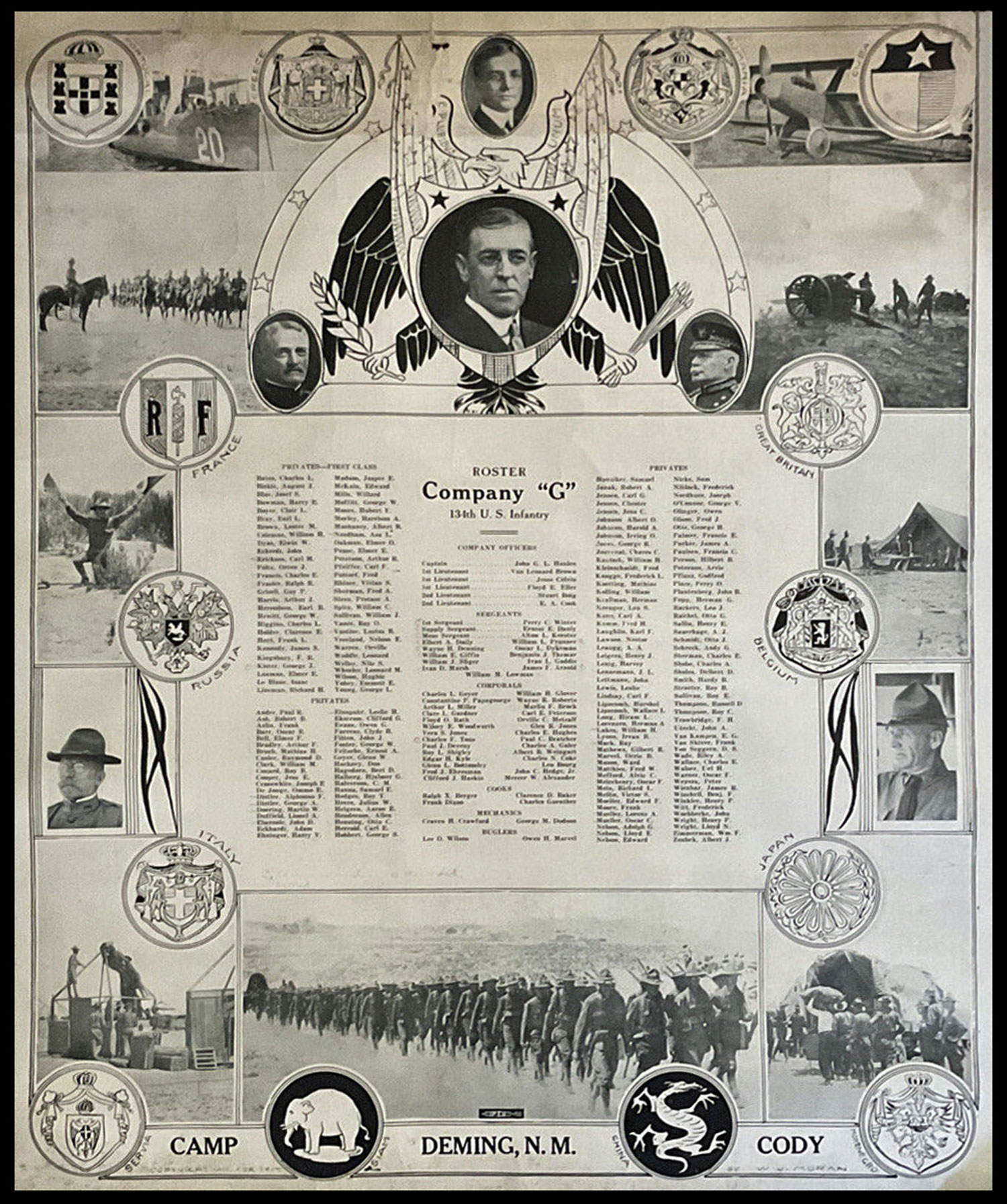
134th Infantry Regiment Website
35th Infantry Division Research Center
"All Hell Can't Stop Us"

 |
134th Infantry Regiment Website35th Infantry Division Research Center"All Hell Can't Stop Us" |
 |
On July 15, 1917, the Regiment was mobilized at Camp Cody, New Mexico, where it was redesignated the 134th Infantry, 34th Division. After having been called on heavily for cadres and replacements, the Regiment embarked for France October 13, 1918, arriving there October 28. It was never committed in action during World War I. Commemorative of that service, the crest bears the steer skull superimposed on the olla, the present insignia of the 34th Division. To complete the Regimental Crest, we find the background of Argent and Azure, the old and present colors of the Infantry.
 |
134th Infantry Regiment, Company G, 1917 Camp Cody, New Mexico |
 |
134th Infantry Regiment, Company M, 1917 Thanksgiving menu and personnel roster, Camp Cody, New Mexico |
134th Infantry Regiment, Supply Company, 1917, Camp Cody, New Mexico
 |
127th Heavy Field Artillery, Battery C, 1917 Thanksgiving Menu and personnel roster, Camp Cody, New Mexico |
The 35th Infantry
Division was formed on August 25, 1917 at Camp Doniphan, Oklahoma from units of
the Kansas and Missouri National Guard.
After training it arrived at Le Havre, France
on May 11, 1918.
On September 26, 1918 it launched an attack in
the Meuse-Argonne offensive, keeping up the attack for four days until relieved
and placed in reserve.
Two weeks later it re-entered the front lines
in the battles at Alsace & Lorraine serving there until the armistice on
November 11, 1918.
The Division returned to the U.S. in April 1919
and was demobilized on May 30, 1919.
During WWI the Division suffered 1,298 killed
in action and 5,998 wounded.
69th Infantry Brigade - 137th Infantry Regiment and 138th Infantry Regiment and 129th Machine Gun Battalion
70th Infantry Brigade - 139th Infantry Regiment, 140th Infantry Regiment and 130th Machine Gun Battalion
60th Field Artillery Brigade - 128th Field Artillery Regiment, 129th Field Artillery Regiment, 130th Field Artillery Regiment, and 110th Trench Mortar Battery
128th Machine Gun Battalion, 110th Engineer Regiment, 110th Field Signal Battalion, Headquarters Troop, 35th Division
110th Train Headquarters and Military Police - 110th Ammunition Train, 110th Supply Train, 110th Engineer Train, 110th Sanitary Train
Losses of Thirty-Fifth Division During The Argonne Battle - Hearings before the Committee on Rules of the House of Representatives, February 17 and 20, 1919
Analysis of the 35th Division's Application of Operational Art During World War I - A Monograph by MAJ Cameron C Lenahan, U.S. Army School of Advanced Military Studies, U.S. Army Command and General Staff College Fort Leavenworth, Kansas - 2017
|
7/11/2025 |